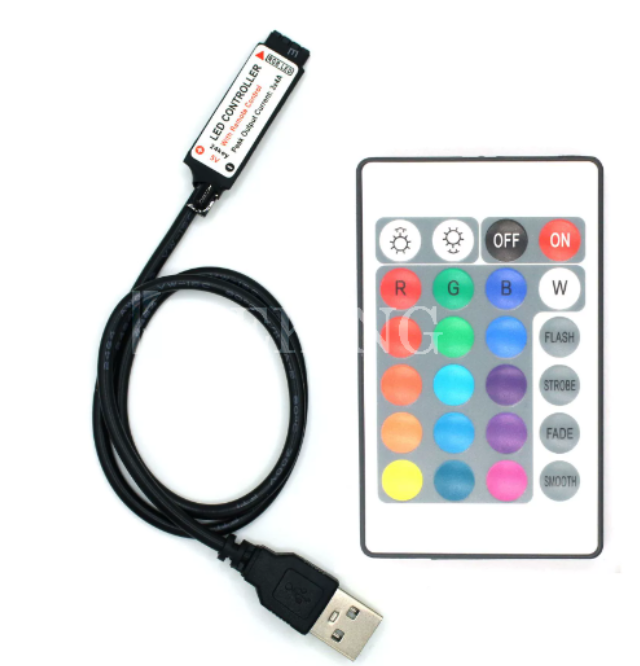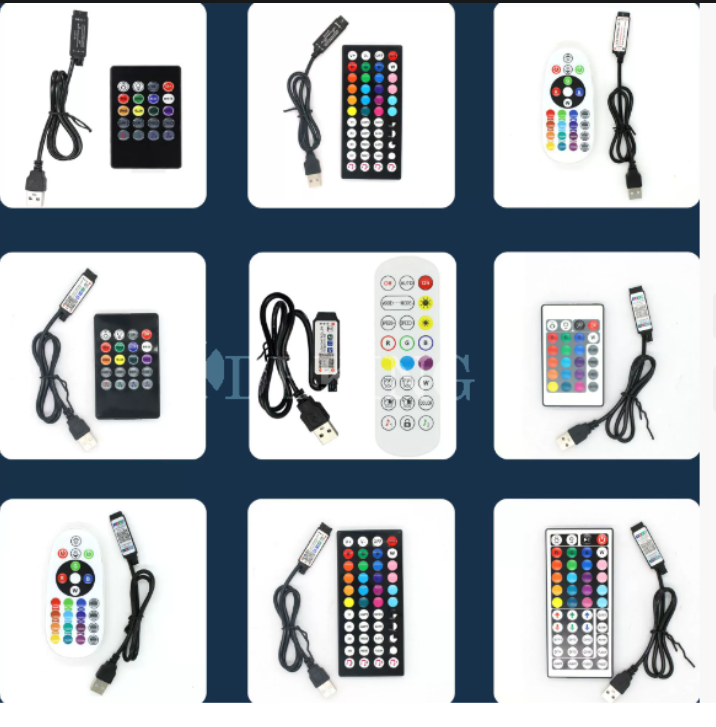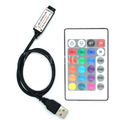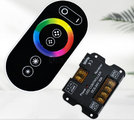The Role of Mini LED Controllers in LED Strip Light Projects
In the rapidly evolving world of LED lighting, efficiency, flexibility, and smart control have become the defining features of modern illumination systems. Among the many innovations driving this trend, the mini LED controller stands out as a compact yet powerful device that bridges the gap between lighting creativity and practical control. For professionals and enthusiasts working with LED strip light projects, understanding the function and importance of mini LED controllers can make a significant difference in both performance and user experience.

What Is a Mini LED Controller?
A mini LED controller is a compact electronic device designed to manage and regulate the lighting effects of LED strips. Despite its small size, it provides the essential functionalities required to control brightness, color, mode, speed, and even synchronization with music or external systems.
Essentially, it serves as the “brain” of the LED strip setup — translating user commands into electrical signals that determine how the LEDs behave. Mini LED controllers are commonly used in residential lighting, automotive lighting, architectural installations, and commercial display projects, where space-saving and easy operation are key considerations.
Key Features and Advantages
-
Compact Design and Easy Integration
One of the biggest advantages of mini LED controllers is their small form factor. These devices are designed to fit easily into tight spaces — behind furniture, inside lighting profiles, or within signage enclosures. Their compact size allows for discreet installations without compromising control performance. -
Multiple Control Methods
Mini controllers support a variety of control options, such as:-
RF (Radio Frequency) remote control – Ideal for simple, wireless control within a certain range.
-
IR (Infrared) remote control – A cost-effective option for basic functions.
-
Bluetooth and Wi-Fi control – Enables smartphone app integration, voice control (via Alexa, Google Home), and synchronization with smart home systems.
This flexibility makes mini LED controllers suitable for both DIY users and professional lighting designers.
-
-
Wide Compatibility
Modern mini controllers are compatible with different types of LED strips, including single-color, CCT (color temperature adjustable), RGB, RGBW, and even addressable pixel LED strips like WS2812B or SK6812. This means a single mini controller can be applied across multiple lighting projects, reducing inventory complexity for installers and suppliers. -
Energy Efficiency and Stability
Mini controllers are engineered to manage current output precisely, ensuring stable voltage regulation and longer LED lifespan. Many models use MOSFET-based dimming circuits or PWM (Pulse Width Modulation) technology to deliver smooth dimming and color transitions without flicker. -
Smart Synchronization and Dynamic Effects
Some advanced mini LED controllers come with built-in IC chips and memory, allowing dynamic lighting effects such as color chasing, gradient transitions, and rhythm-based animations. These are widely used in entertainment lighting, retail displays, and gaming setups, where aesthetics and interactivity are essential.
Why Mini LED Controllers Are Essential in LED Strip Projects
1. Space-Saving in Compact Installations
Many LED strip applications, such as under-cabinet lighting, car interiors, or display cases, have limited space for controllers and wiring. A bulky control box simply isn’t practical. Mini LED controllers are designed to fit into these tight or hidden spaces, ensuring a clean, minimalist installation without visible control modules.
2. Simplified Wiring and User-Friendly Operation
Mini controllers typically come with plug-and-play terminals or pre-soldered connectors, making them extremely easy to install — even for users with limited technical experience. In commercial or batch production projects, this reduces installation time and labor cost significantly.
3. Enhanced Aesthetic Control
With advanced control functions, mini LED controllers allow users to customize lighting behavior — from warm ambient tones to vivid dynamic scenes. For businesses, this means stronger brand presentation and visual impact; for homeowners, it means greater personalization and comfort.
4. Integration with Smart Ecosystems
Modern lighting isn’t just about illumination — it’s about intelligence. Many mini LED controllers now support smart home integration, allowing LED strips to respond to voice commands, mobile apps, or automation routines (e.g., lights turning on automatically at sunset). This makes them a critical component in IoT-enabled lighting systems.
5. Cost-Effective Yet Powerful
Compared to full-sized LED controllers or DMX systems, mini LED controllers are more affordable, yet they retain most of the necessary features for small to medium-sized projects. This balance of performance and price makes them ideal for both commercial mass production and DIY consumer markets.
Typical Applications of Mini LED Controllers
-
Home and Residential Lighting
-
Kitchen under-cabinet lighting
-
Bedroom ambient lighting
-
Living room accent or cove lighting
-
-
Automotive and Vehicle Customization
-
Car interior accent lighting
-
Motorcycle or bicycle LED strips
-
Truck bed and camper lighting
-
-
Architectural and Commercial Lighting
-
Hotel or bar decorative lighting
-
Display shelves and signage illumination
-
Retail showcases and exhibition stands
-
-
Entertainment and Creative Installations
-
Stage and event lighting
-
PC case modding and gaming setups
-
Interactive art installations
-
In each of these cases, mini LED controllers serve as the compact “command center” that determines how the lighting performs and how users interact with it.
Key Technical Considerations When Choosing a Mini LED Controller
When selecting a mini LED controller for your project, it’s essential to evaluate a few technical parameters:
-
Output Channels and Current Rating
-
Single color (1 channel), CCT (2 channels), RGB (3 channels), RGBW (4 channels), etc.
-
Ensure the total current capacity matches or exceeds your LED strip’s requirements.
-
-
Voltage Compatibility
-
Most mini controllers support DC 5V, 12V, or 24V. Always match the voltage to your LED strip power supply.
-
-
Control Protocols
-
Decide whether you need RF remote, Bluetooth, Wi-Fi, or DMX control depending on the project complexity.
-
-
Signal Output Type
-
Constant voltage output for non-addressable strips.
-
SPI signal output for addressable pixel strips.
-
-
Memory and Preset Modes
-
Some controllers retain the last setting even after power-off, ensuring a consistent lighting experience.
-
-
Safety and Certification
-
Look for controllers with CE, RoHS, or FCC certifications, indicating reliable performance and safety compliance.
-
Future Trends in Mini LED Controllers
As the demand for smart lighting and energy-efficient solutions grows, mini LED controllers will continue to evolve. Future trends include:
-
Integration with AI and cloud platforms for predictive lighting and automation.
-
More universal communication protocols like Matter and Zigbee 3.0 for seamless smart home compatibility.
-
Ultra-miniaturized designs with higher power density and better thermal management.
-
Synchronized multi-zone control, enabling complex lighting scenes through a single controller app.
These innovations will make mini LED controllers not only smaller and smarter but also more central to the entire lighting ecosystem.
Conclusion
The mini LED controller may appear to be a small component, but its role in LED strip projects is truly transformative. It determines how efficiently, intelligently, and beautifully an LED strip performs. Whether for home decor, automotive applications, or large-scale architectural lighting, the mini LED controller provides the precision, convenience, and creativity that modern lighting systems demand.
In short, the power of great lighting control no longer depends on size — it depends on smart design. And that’s exactly what the mini LED controller represents: compact innovation with maximum impact.




